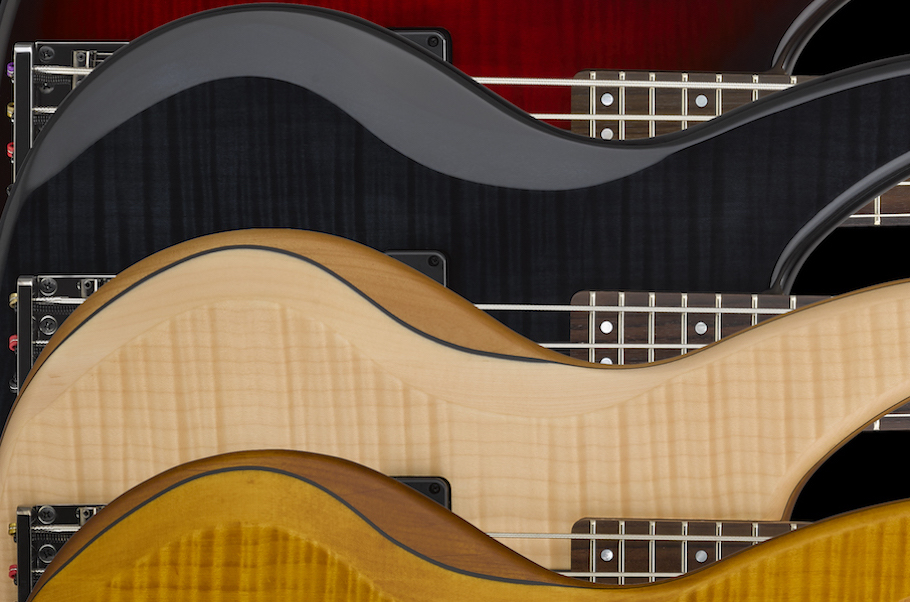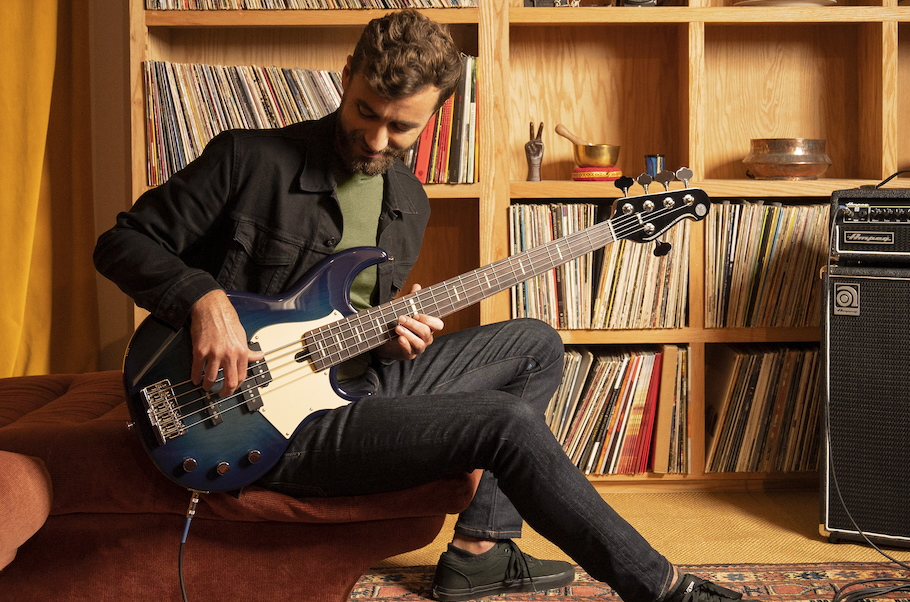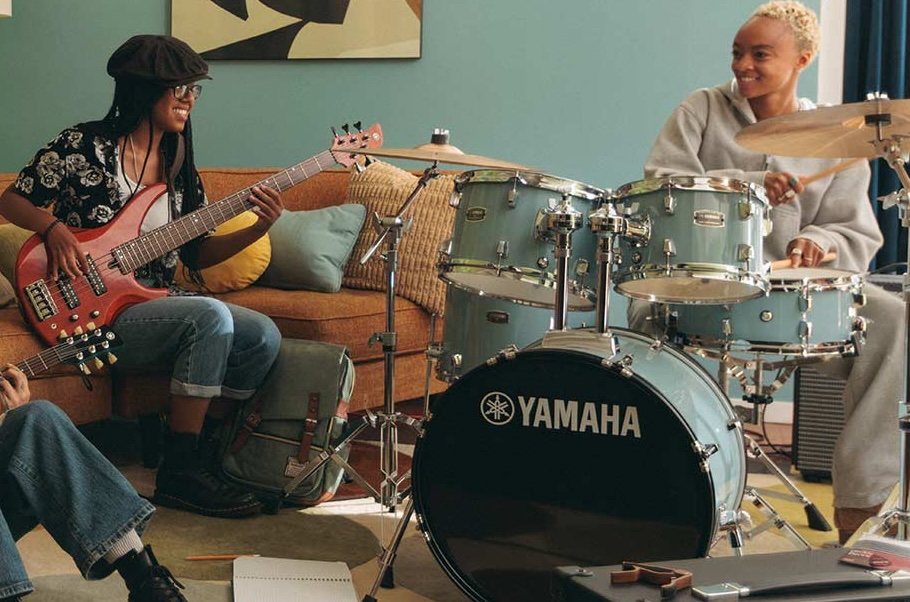Picking vs. Fingerstyle
You can go your own way.
Basses should be played, not objectified. The features, technical specifications and other aspects that make a bass special are important, but how a bass makes you feel when you play it matters so much more. For me, the main “feel factors” are neck profile and how deeply the body and neck vibrate when I play a note — in other words, how responsive the bass is to my touch. The fretting hand, of course, selects the notes you want to play. But the other hand is where the magic truly happens.
How you make the strings vibrate is everything — there’s a wide chasm between a light touch and an aggressive attack, with lots of nuance in between. Some bassists prefer to play the strings with a pick, while others prefer to use their fingers. Thankfully, there’s no binary choice to make here. Bassists of all styles and ability levels have different reasons for choosing one approach over the other, and all those reasons are valid. There is no “best” way to do it — there’s only what works best for you. In fact, I’d argue that you’re limiting your own growth as a bassist until you get competent at both techniques.
Let’s weigh the pros and cons of each approach.
Picking Pros and Cons
Picks come in all kinds of shapes, sizes, thicknesses and materials (plastic, latex, metal, felt, wood), which allows for a very expressive tonal palette in the right hands (or right hand, if you’re a punster). But playing with a pick requires you to combine how you hold it — tightly or loosely, how much of the pick you leave exposed, etc. — with how relaxed your wrist and forearm are. Strings can be played straight-on or with the pick held at an angle to create a sound with more grind to it; either way, it’s hard to play bass with a pick for long periods of time if you’re not resting your hand on the bridge.
Generally speaking, playing with a pick delivers better articulation (there’s more treble harmonic content), whereas playing with your fingers loses some of that sizzle and snappiness. Here are two audio clips that demonstrate the difference. First, a groove played with a pick:
… and here’s the same groove played with the fingers:
Picking has more inherent rhythmic attack — you can better accentuate each kick or snare drum hit, and if you play with a pick, it’s also easier for guitarists to convert to bass. Playing eighth-notes at a fast tempo is easier too — at least initially. In addition, bass techniques like “palm-muting” — where you touch the fleshy side of your hand to the strings while picking — work well when playing with a pick, as this audio clip demonstrates:
But there are some downsides, too, depending on what you’re trying to do. For instance, it’s impossible to play both notes in a double-stop simultaneously with a pick (though you can blend the use of a pick and your fingers if you like), and it’s much harder to play and repeat complex arpeggios that skip across adjacent strings with a pick. In addition, two fingers are required to hold a pick at all times, and there aren’t lots of places to put a pick when you’re not using it (other than holding it between your teeth, which raises hygiene issues), so you’re essentially locked in if you choose to use a pick and don’t have someplace convenient to stash it mid-song. You should also be aware that down- and up- picking strokes have slightly different tonal qualities, which may not be a problem for certain types of music, but could be for others. And then there’s the ever-present danger of dropping a pick mid-song — something that won’t ever be an issue if you play your bass fingerstyle.
Fingerstyle Pros and Cons
Playing bass with your fingers is perhaps more complex than playing with a pick in that it allows you to use one finger or a combination of fingers — even different parts of those fingers, such as your fingernails — to create the sounds you’re feeling. It gives you a more diverse toolkit to get the tone you want out of your bass.
However, unlike the differences in tonality caused by playing down- and up-strokes with a pick, it’s easy to maintain consistent tone with two alternating fingers moving in the same direction. There’s also more dynamic range and tonal variety when playing with your fingers — slapping, thumping and plucking are all possible with your thumb alone, and you can still use the edge of your fingernails to approximate the twang of a pick. In addition, complex polyphonic patterns are easier to play with your fingers (whether using an alternating finger approach or a flamenco-style approach) than with a pick.
These possibilities are magnified by the location in which you choose to anchor your hand. Playing just in front of the bridge by resting the underside of your wrist on it gives you a tight sound, whereas placing your thumb on a thumb rest, a pickup, or even on the side of the neck where it meets the body will result in a juicier, more harmonic sound because different locations along the string have different tonal characteristics. It’s also easier to prevent string noise with your fingers already touching the strings than it is to mute certain strings with your hand.
On the downside, as mentioned previously, when you play fingerstyle, you sacrifice some of the sizzle and snappiness that you get when playing with a pick — although you will be compensated with considerably more low end. You also lose the ability to tamp down the sound by touching the fleshy side of your playing hand to the strings. And last but not least, many guitarists switching over to bass find the fingerstyle technique challenging, if only because it’s so different from the way guitar is played.
If you’re unsure which approach is best for you, try them both and find the one that feels most comfortable. But whether you’re just starting out or well on your way as a bassist, my advice is to not focus on one style exclusively. If you develop expertise with both techniques, you’ll be able to choose the approach that best suits the song you’re playing, without there being a noticeable drop-off in how well you play your part. Having the versatility to do what’s called for in a specific situation gives you the flexibility to change your mind on the fly so you can always create your deepest musical expression — a lofty goal, but one that every musician should aspire to.
All audio clips played on a Yamaha BBP34 bass.
Check out Michael’s other blog posts.
Click here for more information about Yamaha basses.














